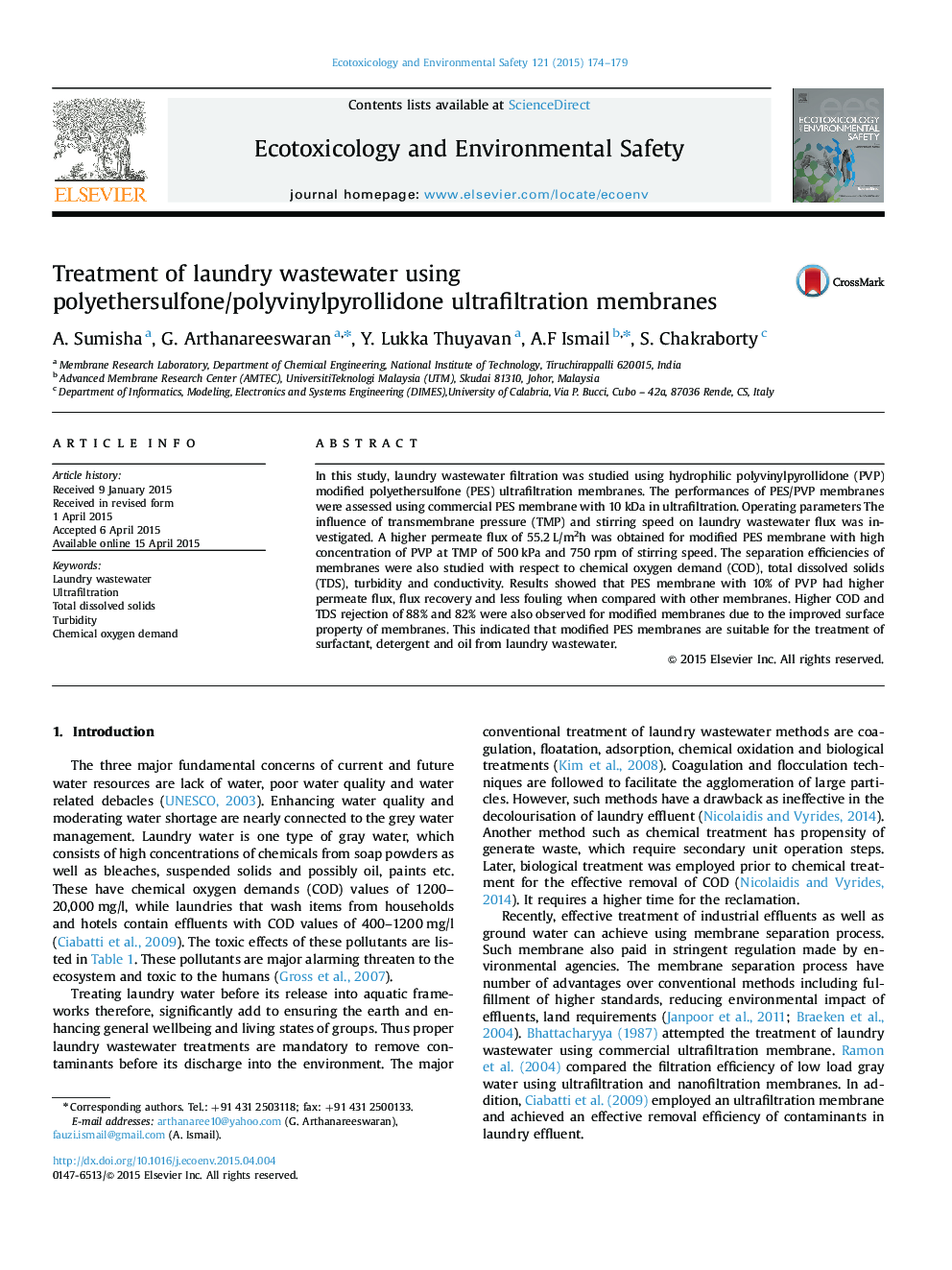| Article ID | Journal | Published Year | Pages | File Type |
|---|---|---|---|---|
| 4419310 | Ecotoxicology and Environmental Safety | 2015 | 6 Pages |
•Polyvinylpyrollidone was used as hydrophilic modifier for polyether sulfone membrane.•Modified membranes exhibited appreciable effluent flux and rejection efficiencies.•Hydrodynamic parameters such as transmembrane pressure and stirring speed showed a significant role on permeate flux and rejection.•COD and Turbidity reduction up to 88% and 98% was achieved using modified membranes.
In this study, laundry wastewater filtration was studied using hydrophilic polyvinylpyrollidone (PVP) modified polyethersulfone (PES) ultrafiltration membranes. The performances of PES/PVP membranes were assessed using commercial PES membrane with 10 kDa in ultrafiltration. Operating parameters The influence of transmembrane pressure (TMP) and stirring speed on laundry wastewater flux was investigated. A higher permeate flux of 55.2 L/m2h was obtained for modified PES membrane with high concentration of PVP at TMP of 500 kPa and 750 rpm of stirring speed. The separation efficiencies of membranes were also studied with respect to chemical oxygen demand (COD), total dissolved solids (TDS), turbidity and conductivity. Results showed that PES membrane with 10% of PVP had higher permeate flux, flux recovery and less fouling when compared with other membranes. Higher COD and TDS rejection of 88% and 82% were also observed for modified membranes due to the improved surface property of membranes. This indicated that modified PES membranes are suitable for the treatment of surfactant, detergent and oil from laundry wastewater.
